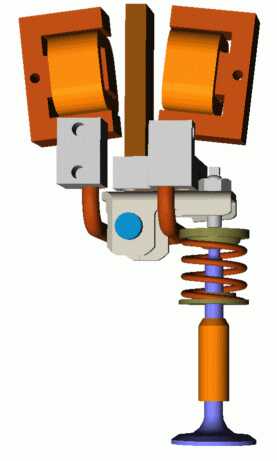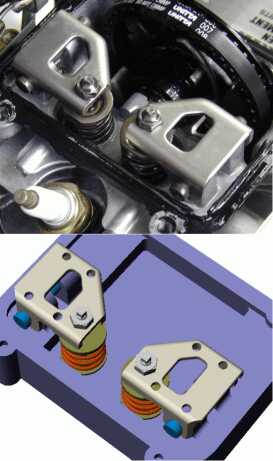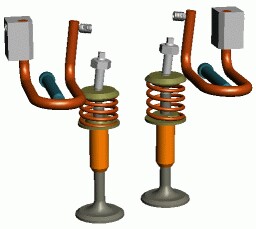Why Small Engines?
In 2002, Magnesense identified an opportunity in the small engine market. Improved control technologies for the automotive scale could be developed in a less demanding small-engine environment. The simpler context would permit quicker commercialization, yielding payback and providing a stepping stone toward the large automotive market. Simplifications specific to small engines could lead to an affordable solution for a much cleaner, quieter, easier-starting, more powerful and efficient power plant for lawnmowers, small tractors, jet skis, skimobiles, ATVs, generators, and eventually on the smaller scale of leaf blowers, power washers, chain saws, etc. This effort received a boost from an Environmental Protection Agency Phase I SBIR grant, which was completed with reviews ranging from good to excellent. The EPA relationship heightened our awareness of emerging emission standards that will challenge the industry and can be met with Magnesense innovations.
The Magnesense Small Engine System
Departing from the predominant linear solenoid approach,
Magnesense has developed a magnetic valve rocker intended to replace a
cam rocker. Its features include:
We need to take maximum advantage of these simplifications, because the price needs to be much lower in the small engine setting. Whether or not a 42-volt standard might be on the way for cars, we need to design for a 12-volt power supply in the small engine field. We need to make do with a very inexpensive microprocessor or DSP. After a few false starts, we settled on the Motorola 56800 DSP family.
 After examining the valve rockers in a Honda generator engine (left),
we decided to depart from the traditional in-line solenoid structure and
develop a magnetic rocker design that would functionally replace the cam-driven
valve rockers seen below on the left. The result was
the solenoid on the right, using a vertical armature rocking between two
e-core yokes. Note the solid model illustrated below
the engine photo, showing holes drilled in the valve rockers for bolting on
the clamp shown on the right. This clamp holds down
the bottom horizontal segment of the L-shaped rocker and also captures one
end of a folded torsion spring. The rocker itself consists
of L-shaped laminations, this time stacked in the same plane as the E-core
yokes on either side.
After examining the valve rockers in a Honda generator engine (left),
we decided to depart from the traditional in-line solenoid structure and
develop a magnetic rocker design that would functionally replace the cam-driven
valve rockers seen below on the left. The result was
the solenoid on the right, using a vertical armature rocking between two
e-core yokes. Note the solid model illustrated below
the engine photo, showing holes drilled in the valve rockers for bolting on
the clamp shown on the right. This clamp holds down
the bottom horizontal segment of the L-shaped rocker and also captures one
end of a folded torsion spring. The rocker itself consists
of L-shaped laminations, this time stacked in the same plane as the E-core
yokes on either side.
The valve rocker employs yet another non-standard spring
design: a folded torsion spring making a U-shape in a horizontal plane
with the ends of the “U” bent up. The same aluminum
piece that clamps down the armature “L” also receives one of the upward-bent
ends of the spring. The other end of that same spring
is fixed, screwed down adjustably to the front surface of the valve and solenoid
enclosure, where the recessed screw holes are seen facing the viewer in
the image above on the right. The action of the torsion
springs is seen in the view below on the right, with the rocking clamp and valve rocker removed, leaving only the rocker pivot
pins and the set screws that hold the moving ends of the springs. The lash adjustment screws pressing down on the valve ends
are threaded through the valve rockers, which are removed from view. The action of the torsion springs is readily seen.
rocking clamp and valve rocker removed, leaving only the rocker pivot
pins and the set screws that hold the moving ends of the springs. The lash adjustment screws pressing down on the valve ends
are threaded through the valve rockers, which are removed from view. The action of the torsion springs is readily seen.
The valves and actuators are seen in the context of the cylinder and piston below. An animation of the valves and piston head is provided in low and high bandwidths.
Now that we have the illustrated valve rocker design operating on an instrumented lab bench, we understand how to make it smaller easier to fabricate, and especially how to facilitate its assembly and alignment. Its power consumption is extremely low, and design tradeoffs could reduce the size while maintaining acceptably low power consumption.
Magnesense LLC Gorham,ME (207) 839-8637
©2009 Joseph Seale